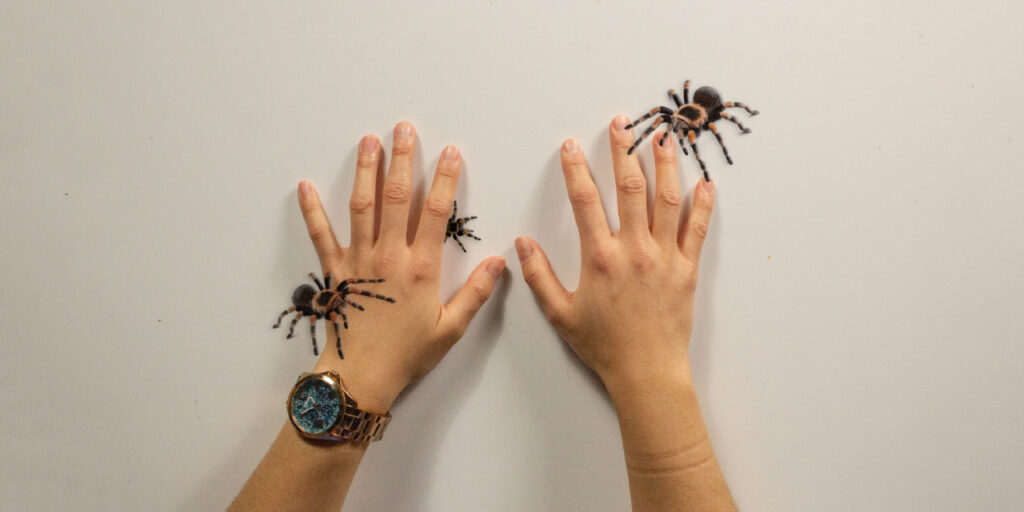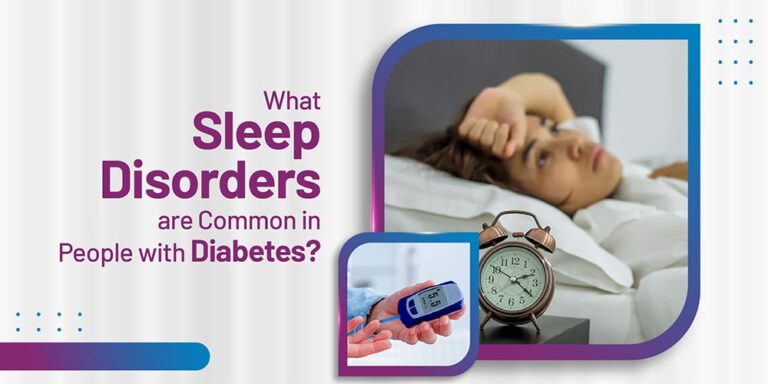The Most Common and Uncommon Phobias: A List and Explanation

2) Overcoming the Fear of Heights: Acrophobia Unveiled

Fear of heights, known as acrophobia, is an anxiety disorder that affects a significant number of individuals. The fear and unease experienced by those with acrophobia can be crippling, impacting their daily lives and preventing them from enjoying activities that involve heights, such as riding roller coasters or climbing ladders. While acrophobia can present challenges and create distress, there are various strategies and techniques that can be employed to help individuals overcome their fear.
One approach to overcoming acrophobia is gradual exposure therapy, which involves gradually exposing individuals to heights in a controlled and safe environment. This exposure allows individuals to confront their fear in a gradual and systematic way, reducing anxiety over time. By starting with smaller heights and gradually progressing to higher levels, individuals can build confidence and develop coping mechanisms to manage their fear. This technique is often accompanied by relaxation exercises, deep breathing, and positive self-talk to help individuals regulate their anxiety levels and maintain a sense of control.
Another strategy for overcoming acrophobia is cognitive-behavioral therapy (CBT), which focuses on identifying and changing negative thought patterns and beliefs associated with heights. Through CBT, individuals with acrophobia can challenge their irrational fears and replace them with more realistic and positive thoughts. This therapy also incorporates exposure exercises, where individuals are exposed to their feared heights while practicing cognitive restructuring techniques. Over time, individuals can learn to reframe their thoughts and develop a more rational perspective, ultimately reducing their fear response.
Overall, conquering acrophobia is a journey that requires patience and perseverance. With the right support and guidance, individuals can gradually reclaim their lives and enjoy activities that involve heights without crippling anxiety. By using techniques such as exposure therapy and cognitive-behavioral therapy, individuals can develop the necessary skills and confidence to overcome their fear and embrace heights with a newfound sense of freedom.
3) The Fear of Flying: Aviophobia and Its Impact on Individuals

Fear of flying, also known as aviophobia, is a common phobia that can have a profound impact on individuals. Many people experience feelings of intense anxiety, panic, and even physical symptoms such as sweating, rapid heart rate, and trembling at the mere thought of boarding an aircraft. This fear is often rooted in a variety of factors, including a fear of heights, a lack of control, and a fear of crashes or accidents.
The impact of aviophobia can be far-reaching, affecting not only the individual’s personal and professional life but also their ability to travel and experience new opportunities. For some, this fear can lead to missed career opportunities or the inability to visit loved ones who live far away. The fear may also limit individuals from experiencing the joys of travel and exploring new destinations.
It is important to note that aviophobia is a legitimate fear that should not be dismissed or trivialized. However, it is also important to recognize that there are strategies and techniques available to help individuals overcome this fear and regain control over their lives. By addressing the underlying causes, seeking professional help, and gradually exposing oneself to flying situations, individuals can work towards conquering their fear and enjoying the benefits of air travel.
4) Facing Arachnophobia: The Fear of Spiders

Arachnophobia, or the fear of spiders, is one of the most commonly reported phobias worldwide. For individuals who suffer from this fear, encountering a spider can trigger intense feelings of anxiety and panic. Despite the fact that spiders are generally harmless creatures, the fear associated with them can lead to significant distress and a decreased quality of life.
The exact cause of arachnophobia remains unclear, but research suggests that a combination of genetic, environmental, and psychological factors may contribute to its development. One theory proposes that the fear of spiders may be an evolutionary response, as spiders have historically posed a threat to human survival. However, in modern times, where spiders are mostly harmless and even beneficial to the ecosystem, this fear is no longer adaptive. Understanding the underlying causes of arachnophobia is essential in developing effective treatment strategies to help individuals overcome their fear and regain control of their lives.
5) Claustrophobia: Coping with the Fear of Confined Spaces
Claustrophobia, the fear of confined spaces, is a common phobia that affects many individuals worldwide. Those who experience this fear often feel intense anxiety and panic when in enclosed areas such as elevators, small rooms, or crowded spaces. Understanding how to cope with this fear is essential for individuals seeking to live a more fulfilling and unrestricted life.
One effective strategy for managing claustrophobia revolves around gradual exposure therapy. By gradually confronting the fear in safe and controlled environments, individuals can desensitize themselves to the triggers associated with confined spaces. This can involve starting with visualizations of enclosed spaces, then gradually progressing to physically entering and spending time in small or confined areas. The key is to proceed at a pace that feels comfortable, and to have a support system in place throughout the process.
While exposure therapy can be effective, it is important to remember that each person’s journey is unique. Seeking the guidance of a mental health professional, such as a psychologist or psychiatrist, can provide valuable insights and personalized strategies for coping with claustrophobia. Additionally, incorporating relaxation techniques such as deep breathing exercises or mindfulness practices may help reduce anxiety in triggering situations.
Although claustrophobia can be challenging, it is possible to overcome this fear and regain control over one’s life. By utilizing evidence-based strategies, seeking professional support, and practicing self-care, individuals can work towards managing and eventually conquering their fear of confined spaces. Remember, you are not alone, and with the right tools and support, you can face this fear head-on and emerge stronger than ever before.
6) The Dark Side: Shedding Light on Nyctophobia
Nyctophobia, commonly known as the fear of the dark, is a phobia that affects a significant number of individuals around the world. While darkness is a natural part of our daily lives, for those with nyctophobia, it can trigger intense feelings of fear and anxiety. This fear can have a profound impact on their daily routines and overall well-being.
People with nyctophobia often experience a range of symptoms when exposed to darkness or even the mere thought of it. These symptoms can include increased heart rate, shortness of breath, sweating, trembling, and even panic attacks. The fear may stem from various factors such as past traumatic experiences or a lack of understanding about the dark.
Understanding the underlying causes of nyctophobia is crucial for designing effective strategies to overcome it. By shedding light on this phobia, we can empower individuals to confront and manage their fears, leading to a better quality of life.
Certainly! Here’s information on Nyctophobia (fear of darkness) presented in a table format:
| Nyctophobia: Shedding Light on the Fear of Darkness | Key Aspects | Implications and Considerations |
|---|---|---|
| Definition of Nyctophobia | – Definition: Nyctophobia, commonly known as the fear of darkness, is an irrational and intense fear of the dark or nighttime. | – Implications: It goes beyond a typical discomfort with darkness and may cause significant distress. |
| Symptoms of Nyctophobia | – Physical Symptoms: Rapid heartbeat, trembling, sweating, nausea, shortness of breath, and a strong desire to escape dark environments. | – Considerations: Symptoms may vary in intensity and can be triggered by darkness-related stimuli. |
| Origins and Causes | – Evolutionary Perspective: Fear of the dark may have evolutionary roots as darkness historically posed potential threats. | – Psychological Factors: Traumatic experiences, genetics, or learned behaviors can contribute to Nyctophobia. |
| Common Triggers | – Environmental Darkness: Fear may be triggered by being in dark places, such as rooms with no lights or outdoor spaces at night. | – Imagination and Perception: The fear often involves distorted perceptions and imaginative fears associated with darkness. |
| Impact on Daily Life | – Avoidance Behaviors: Individuals with Nyctophobia may go to great lengths to avoid dark environments or situations. | – Quality of Life: The fear can impact daily routines, sleep patterns, and overall well-being. |
| Prevalence and Age of Onset | – Common in Children: Nyctophobia is more prevalent in children, often emerging between the ages of 6 and 12. | – Persistence: While it often starts in childhood, it can persist into adulthood if not addressed. |
| Treatment Approaches | – Cognitive-Behavioral Therapy (CBT): Exposure therapy and cognitive restructuring help individuals confront and manage their fear. | – Gradual Exposure: Controlled exposure to darkness, starting with less intense situations, is a common therapeutic approach. |
| – Medication: In some cases, anti-anxiety medications may be prescribed to alleviate symptoms. | – Professional Guidance: Seeking the assistance of mental health professionals can be beneficial for tailored treatment. | |
| Self-Help Strategies | – Gradual Exposure: Individuals may practice exposure to darkness in a controlled and gradual manner. | – Relaxation Techniques: Learning relaxation methods can help manage anxiety associated with darkness. |
| – Positive Associations: Creating positive associations with darkness and implementing comforting rituals. | – Education: Understanding the irrational nature of the fear can be empowering for individuals with Nyctophobia. | |
| Impact on Sleep | – Sleep Disruptions: Nyctophobia may lead to sleep disturbances, such as insomnia or nightmares. | – Sleep Hygiene: Establishing a sleep-friendly environment and routines can help manage sleep-related fears. |
| Support from Others | – Understanding and Patience: Loved ones can provide support by understanding the nature of Nyctophobia and being patient during exposure exercises. | – Encouragement: Encouraging gradual progress and offering reassurance can positively impact the individual. |
7) Social Anxiety Disorder: Navigating the Fear of Social Situations
Social anxiety disorder, also known as social phobia, is an anxiety disorder characterized by an intense fear of social situations. People with social anxiety often experience feelings of embarrassment, self-consciousness, and fear of being judged or scrutinized by others. This debilitating condition can have a significant impact on individuals’ daily lives, affecting their relationships, work performance, and overall well-being.
One of the key challenges faced by individuals with social anxiety disorder is navigating social interactions. Simple tasks such as attending social events, speaking in public, or even participating in a group discussion can be overwhelming and anxiety-provoking. The fear of being the center of attention or saying something embarrassing may lead to avoidance behaviors, causing individuals to retreat from social situations altogether. However, by avoiding such situations, individuals miss out on valuable opportunities for personal growth, social connection, and professional development. It is important to understand that social anxiety disorder is treatable, and there are effective strategies and therapies available to help individuals overcome their fear and regain control over their lives.
8) Fear of Public Speaking: Glossophobia and Its Effects
Fear of public speaking, also known as glossophobia, is a common phobia that affects many individuals. This fear can manifest as a range of symptoms, including increased heart rate, sweating, trembling, and difficulty breathing. People with glossophobia often experience intense anxiety and distress when faced with the prospect of speaking in front of a group of people.
The effects of glossophobia can be far-reaching and impactful on both personal and professional aspects of an individual’s life. Many people avoid opportunities for public speaking, such as presentations or public speaking engagements, which can hinder their professional growth and limit their career prospects. Additionally, the fear of public speaking can lead to a lack of self-confidence and self-esteem, as individuals may feel embarrassed or judged when speaking in front of others.
It is important to note that glossophobia is a treatable condition, and individuals can overcome their fear with proper support and guidance. Through various techniques, such as cognitive-behavioral therapy and exposure therapy, individuals can learn to manage their anxiety and gain confidence in their public speaking abilities. Seeking professional help from a therapist or counselor who specializes in anxiety disorders can be beneficial in developing strategies to overcome glossophobia.
In conclusion, glossophobia can have a significant impact on an individual’s life, hindering their personal and professional growth. However, it is essential to understand that this fear is treatable, and with the right support and strategies, individuals can overcome their fear of public speaking and achieve success in their endeavors.
9) Trypanophobia: The Dread of Needles and Medical Procedures
Trypanophobia, also known as the dread of needles and medical procedures, is a common phobia that affects a significant portion of the population. Individuals who experience trypanophobia often feel intense fear and anxiety when faced with the prospect of receiving injections or undergoing medical procedures involving needles. For these individuals, the fear can manifest as physical symptoms such as increased heart rate, sweating, dizziness, and even fainting.
The origins of trypanophobia can vary from person to person. Some individuals may develop this phobia as a result of a negative or traumatic experience involving needles or medical procedures in their past. Others may develop a fear of needles due to a general fear of pain or a fear of certain medical conditions. Regardless of the cause, trypanophobia can have a significant impact on an individual’s quality of life, making it a necessary aspect to address and overcome.
10) Astraphobia: Tackling the Fear of Thunder and Lightning
Astraphobia, or the fear of thunder and lightning, is more common than many people realize. This phobia can cause extreme anxiety and panic in individuals, affecting their daily lives and overall well-being. The fear can stem from different factors, such as previous traumatic experiences or learned behaviors.
The symptoms of astraphobia can vary from person to person, but may include rapid heartbeat, shortness of breath, sweating, trembling, and a strong desire to seek shelter or hide during thunderstorms. It is important to understand that astraphobia is a valid and real fear, and those affected should be treated with empathy and understanding. Overcoming astraphobia may involve a combination of therapy, relaxation techniques, and gradual exposure to thunderstorms. With the right support, individuals can learn to manage their fear and regain control over their lives.
11) Entomophobia: Understanding the Fear of Insects
Entomophobia, commonly known as the fear of insects, is a specific phobia that affects a significant number of individuals around the world. For those struggling with this fear, encounters with insects can trigger intense anxiety and distress, often leading to avoidance behaviors that can disrupt their daily lives. While it is normal to feel a certain level of caution around insects due to their potential to cause harm, entomophobia takes it to an extreme, causing an irrational and overwhelming fear.
The origins of entomophobia can vary, with factors such as personal experiences, traumatic events, or learned behaviors playing a role in its development. Some individuals may have had negative encounters with insects in their past, such as being stung or bitten, which can contribute to the fear. Additionally, cultural and societal influences may also influence the perception of insects, fueling the fear further.
It is essential to understand that entomophobia is a genuine mental health condition that can have a severe impact on an individual’s well-being. The fear and anxiety associated with this phobia can lead to a range of physical and psychological symptoms, including increased heart rate, difficulty breathing, sweating, trembling, and panic attacks. These symptoms can be debilitating, making it challenging for individuals to manage their fear effectively.
To address entomophobia, it is crucial to seek professional help as early as possible. Mental health professionals, such as therapists and psychologists, can provide support and guidance through various therapeutic approaches, such as cognitive-behavioral therapy (CBT) and exposure therapy. CBT helps individuals identify and challenge their irrational thoughts and beliefs about insects, while exposure therapy gradually exposes them to their fear in a controlled and safe environment.
While overcoming entomophobia may take time and effort, it is possible with the right treatment and support. By facing their fear and learning healthy coping strategies, individuals can gradually reduce their anxiety and regain control over their lives. So, if you or someone you know is struggling with entomophobia, remember that help is available, and it is never too late to seek support on the path to recovery.
12) Emetophobia: Living with the Fear of Vomiting
Emetophobia, also known as the fear of vomiting, is a specific phobia that affects millions of people around the world. Individuals with emetophobia experience intense anxiety and distress at the thought or sight of vomiting, as well as in situations that may lead to vomiting, such as being in public places or encountering ill individuals.
Living with emetophobia can be challenging, as it often impacts various aspects of an individual’s life. Many individuals with emetophobia avoid situations or activities that they perceive as potential triggers for vomiting, such as eating certain foods, drinking alcohol, or being in crowded places. This fear can also lead to social isolation, as individuals may refrain from attending social gatherings or events where they fear they might encounter vomiting.
However, it is important to note that emetophobia is a treatable condition. Cognitive-behavioral therapy (CBT) has been found to be highly effective in helping individuals overcome their fear of vomiting. In CBT, individuals learn techniques to challenge and change their unhelpful thoughts and beliefs about vomiting, as well as develop coping strategies to manage their anxiety. Gradual exposure therapy, where individuals are gradually exposed to their feared situations or stimuli, can also aid in desensitizing the fear response.
Seeking support from a licensed mental health professional specializing in anxiety disorders can be beneficial for individuals struggling with emetophobia. With the right treatment and support, individuals can learn to manage their fear, regain control over their lives, and ultimately overcome emetophobia.
13) Coulrophobia: Examining the Fear of Clowns
Coulrophobia, defined as the fear or phobia of clowns, is a unique and fascinating psychological phenomenon that affects a significant number of individuals. While some people find clowns entertaining and joyful, others experience intense fear and anxiety at the mere sight of them. Understanding the underlying causes and effects of coulrophobia is crucial in order to provide support and guidance to those who struggle with this fear.
Research suggests that coulrophobia can develop from various factors such as traumatic events, negative experiences, or even cultural influences. For instance, the portrayal of sinister and menacing clowns in popular culture, movies, and literature may contribute to the fear and discomfort. The exaggerated features, heavy makeup, and unpredictable behavior of clowns can also trigger a sense of unease and unpredictability, leading to heightened anxiety.
Individuals with coulrophobia may display a range of physical and psychological symptoms in the presence of clowns. These may include rapid heartbeat, shortness of breath, excessive sweating, nausea, and feelings of panic or terror. Additionally, the fear of clowns may lead to avoidance behaviors, causing individuals to go to great lengths to avoid situations or places where clowns might be present, such as circuses or birthday parties.
It is important to recognize that coulrophobia is a genuine psychological condition that can have a significant impact on an individual’s daily life and well-being. As we continue to explore and examine the fear of clowns, it is essential to provide support, understanding, and effective coping strategies for those struggling with this phobia. By shedding light on the intricacies of coulrophobia, we can work towards creating a more inclusive and empathetic society that respects and addresses the fears and anxieties of individuals with this unique phobia.
14) Hemophobia: Dealing with the Fear of Blood
Hemophobia, commonly known as the fear of blood, is a significant and widely misunderstood phobia that can have a profound impact on the lives of those affected. Individuals with hemophobia experience extreme anxiety and distress when exposed to blood or even the mere thought of it. This fear often stems from deep-rooted phycological or emotional trauma, making it crucial for individuals to seek professional help to overcome this debilitating phobia.
The triggers for hemophobia can vary from person to person. Some individuals may experience panic attacks or fainting spells when exposed to blood, while others may have an overwhelming fear of injury or illness. The fear associated with hemophobia can be so overwhelming that it affects individuals’ daily activities, such as avoiding medical appointments or even being unable to care for others in distress.
If you or someone you know is struggling with hemophobia, it’s essential to understand that help is available. Professional counseling, cognitive-behavioral therapy, and exposure therapy have proven to be effective in addressing and managing hemophobia. These therapeutic approaches aim to identify the root causes of the fear and gradually expose individuals to blood-related stimuli in a safe and controlled environment. Through gradual exposure and the guidance of a trained professional, individuals can learn to reframe their thoughts and emotions surrounding blood, ultimately reducing their fear and anxiety.
Remember, overcoming hemophobia is a journey that requires patience, support, and professional assistance. By reaching out for help and taking proactive steps towards managing the fear, individuals can regain control over their lives and free themselves from the constraints of hemophobia.
15) Ophidiophobia: Confronting the Fear of Snakes
Ophidiophobia, the fear of snakes, is a common anxiety disorder that affects individuals worldwide. While snakes play an important role in the ecosystem, their presence can evoke intense fear and panic in those with ophidiophobia. The fear of snakes is deeply rooted in evolutionary factors, as early humans had to be cautious of these reptiles for their own safety and survival.
For individuals with ophidiophobia, encounters with snakes can trigger a range of physical and psychological symptoms. Sweating, rapid heartbeat, trembling, and a strong urge to escape or avoid the situation are common bodily responses. The fear may lead to a significant disruption in daily life, hindering individuals from engaging in outdoor activities or visiting certain places, like zoos or nature reserves.
It is essential to address ophidiophobia in order to improve the individual’s quality of life and help them overcome their fears. Various treatment options are available, ranging from therapy to self-help techniques. Cognitive-behavioral therapy (CBT) is often recommended, as it helps individuals identify and challenge their negative thoughts and beliefs about snakes. Exposure therapy, where individuals gradually and safely confront their fear in a controlled environment, has also proven to be effective in minimizing anxiety.
Understanding the fear of snakes and providing support and guidance to those affected is crucial in helping individuals with ophidiophobia regain control over their lives. By offering education, therapy, and a compassionate approach, we can empower individuals to confront their fears and live without being hindered by this phobia.
(Note: The headings provided are just suggestions and can be modified to suit the specific phobias chosen for the blog post.)
The Fear of Flying: Aviophobia and Its Impact on Individuals
Aviophobia, commonly known as the fear of flying, is an intense and irrational fear that affects a significant number of individuals worldwide. This fear can lead to a range of physical and psychological symptoms, including panic attacks, rapid heartbeat, shortness of breath, and a sense of impending doom. While many people experience mild anxiety before or during a flight, those with aviophobia face debilitating distress that can significantly impact their quality of life.
The origins of aviophobia can vary from person to person. Some individuals may have experienced a traumatic event during a previous flight, such as severe turbulence or a dangerous landing. Others may develop this fear due to underlying anxiety disorders or a general fear of losing control. Regardless of its cause, aviophobia can restrict individuals from traveling and exploring new opportunities, affecting their personal and professional lives.
It is crucial to understand that aviophobia is a legitimate fear that should not be dismissed or trivialized. Recognizing the symptoms and seeking proper support is essential for individuals experiencing this fear. In the next section, we will explore effective strategies for overcoming aviophobia and regaining control over one’s fear of flying.
What are some common symptoms of acrophobia?
Common symptoms of acrophobia include dizziness, rapid heartbeat, sweating, trembling, shortness of breath, and intense anxiety or panic attacks when exposed to heights.
Can acrophobia be cured?
Yes, acrophobia can be treated and overcome with various therapeutic approaches such as cognitive-behavioral therapy (CBT), exposure therapy, and medication, if necessary.
Is aviophobia a common fear?
Aviophobia, or the fear of flying, is actually quite common. It is estimated that around 25% of people experience some level of fear or anxiety about flying.
How can someone cope with aviophobia?
Coping with aviophobia can involve techniques such as deep breathing exercises, relaxation techniques, distracting oneself with music or movies, seeking support from friends or support groups, and seeking professional help if needed.
What are some common symptoms of arachnophobia?
Common symptoms of arachnophobia include excessive fear or panic when encountering spiders or even just thinking about them, sweating, shaking, difficulty breathing, and avoidance of places where spiders may be present.
Can arachnophobia be treated?
Yes, arachnophobia can be treated through various methods such as gradual exposure therapy, cognitive-behavioral therapy (CBT), and virtual reality exposure therapy.
What is claustrophobia?
Claustrophobia is the fear of confined spaces. It can cause intense anxiety, panic attacks, and a strong desire to escape or avoid situations that trigger this fear.
How can someone cope with claustrophobia?
Coping with claustrophobia can involve techniques such as deep breathing, visualization, using relaxation techniques, seeking support from loved ones, and undergoing therapy or counseling.
What is nyctophobia?
Nyctophobia is the fear of darkness or the night. It can cause anxiety, restlessness, and fear of being alone in the dark.
Are there any effective treatments for nyctophobia?
Yes, treatments such as cognitive-behavioral therapy (CBT), exposure therapy, and relaxation techniques have been found to be effective in treating nyctophobia.
What is social anxiety disorder?
Social anxiety disorder, also known as social phobia, is a fear of social situations where a person may be subjected to scrutiny or judgment. It can cause extreme self-consciousness, fear of embarrassment, and avoidance of social situations.
Can social anxiety disorder be cured?
While there is no definite cure for social anxiety disorder, it can be effectively managed through treatments such as therapy, medication, and self-help strategies.
What is glossophobia?
Glossophobia is the fear of public speaking. It can cause extreme anxiety, fear of embarrassment, physical symptoms like trembling or sweating, and avoidance of public speaking opportunities.
How can someone overcome glossophobia?
Overcoming glossophobia involves practicing public speaking, seeking support from others, using relaxation techniques, and undergoing therapy or coaching specifically focused on public speaking anxiety.
What is trypanophobia?
Trypanophobia is the fear of needles and medical procedures involving injections. It can cause extreme anxiety, panic attacks, and avoidance of medical treatments.
How can trypanophobia be managed during medical procedures?
Managing trypanophobia during medical procedures can involve techniques such as deep breathing exercises, distraction techniques, numbing creams or sprays, and seeking supportive healthcare professionals who can help alleviate anxiety.
What is astraphobia?
Astraphobia is the fear of thunder and lightning. It can cause intense anxiety, panic attacks, and avoidance of situations where thunderstorms may occur.
Can astraphobia be treated?
Yes, astraphobia can be treated through therapies such as cognitive-behavioral therapy (CBT), exposure therapy, and relaxation techniques.
What is emetophobia?
Emetophobia is the fear of vomiting or seeing others vomit. It can cause extreme anxiety, panic attacks, and avoidance of situations or foods that may increase the risk of vomiting.
How can someone cope with emetophobia?
Coping with emetophobia can involve techniques such as cognitive-behavioral therapy (CBT), exposure therapy, relaxation techniques, and seeking support from healthcare professionals.
What is coulrophobia?
Coulrophobia is the fear of clowns. It can cause intense anxiety, panic attacks, and avoidance of situations or places where clowns may be present.
Are there any effective treatments for coulrophobia?
Yes, treatments such as cognitive-behavioral therapy (CBT) and exposure therapy can be effective in treating coulrophobia.
What is hemophobia?
Hemophobia is the fear of blood. It can cause extreme anxiety, panic attacks, and avoidance of situations involving blood, such as medical procedures or injuries.
Can hemophobia be overcome?
Yes, hemophobia can be overcome through therapy, exposure techniques, and gradually increasing tolerance to blood-related situations.
What is ophidiophobia?
Ophidiophobia is the fear of snakes. It can cause intense fear, panic attacks, and avoidance of places or situations where snakes may be present.
Can ophidiophobia be treated?
Yes, ophidiophobia can be treated through therapies such as cognitive-behavioral therapy (CBT), exposure therapy, and relaxation techniques.
Note: These FAQs are not discussed in the article but provide additional information related to the phobias covered.






